Updated July 2025 – Invent at Seattle Children’s Postdoctoral Scholars Program is just 2 years old, but there’s already plenty of progress to celebrate. Seattle Children’s Research Institute’s first-of-its-kind scientific incubator — where immensely talented early career researchers meet the challenges of curing pediatric diseases — is succeeding in providing a runway from bench to bedside through extensive education, mentorship, biotech infrastructure and financial support.
Distinctive Approach Attracts Global Notice
The Invent at Seattle Children’s program has quickly gained global notoriety, generating interest queries from across the U.S. and around the world. There are now 33 scholars, including six affiliate members (postdoctoral fellows already employed by Seattle Children’s who are working on “discovered here” therapeutics and applied to be part of the program to share in the benefits). The scholars come from over 10 different countries, including the United States, Bosnia, Brazil, China, Ghana, India, Japan, Mauritius, Nigeria, South Africa and Uganda.
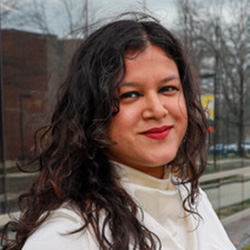 Aakanksha Jha, PhD
Aakanksha Jha, PhDEach scholar has a laboratory, clinical and biotech mentor. In addition to Seattle Children’s faculty, researchers at the University of Washington (UW), Benaroya Research Institute and Fred Hutch provide mentorship.
“I really liked the fact that I could choose from a plethora of very remarkable scientists to act as my mentors,” said new scholar Aakanksha Jha, PhD, whose research is aimed at engineering soft-tissue biomaterial models to better understand the biology of Ewing sarcoma, a bone and soft-tissue cancer. She plans to further use this biomaterial as a drug screening platform to stop the cancer’s spread.
Dr. Jha’s lab mentors include Seattle Children’s Beth Lawlor, MD, PhD, Ben Towne Center for Childhood Cancer and Blood Disorders Research, and UW’s Cole DeForest, PhD. “Both mentors have been incredibly supportive. They recognize that this is a non-traditional postdoc and let me plan my own experiments and do my own science, with some guidance from them,” she said. “Both also make sure I am networking in the Pacific Northwest biotech community, making my name known.”
Grant and Patent Triumphs
The Invent at Seattle Children’s program participants have had strong early funding success. Of the scholars who applied for Washington Research Foundation (WRF) Technology Commercialization Grants, 75% were awarded. Over the last two years, WRF has given over $4.3 million in grants to the program through the research institute. The funds accelerate the components of product development critical for subsequent investment funding or Investigational New Drug (IND) filings.
 From left, Sinduja Marx, PhD, Akinsola Oyelakin, PhD, and Jim Olson, MD, PhD
From left, Sinduja Marx, PhD, Akinsola Oyelakin, PhD, and Jim Olson, MD, PhD“I can’t really think of any other situation in academia where 75% of an organization’s applicants have been successful,” said Jim Olson, MD, PhD, Ben Towne Center for Childhood Cancer and Blood Disorders Research, who leads the program along with Amanda Jones, PhD, Science Education; Alexis Kaushansky, PhD, Center for Global Infectious Disease Research; and Franck Kalume, PhD, Norcliffe Foundation Center for Integrative Brain Research.
The talent incubation approach is paying dividends in intellectual property, too.
As of January 2025, Invent scholars submitted 14 invention disclosures — the first step of the commercialization process to determine whether patent protection should be sought — to the research institute’s Office of Science Industry Partnerships/Intellectual Property Core. (Update: As of July 2025, Invent scholars submitted 22 invention disclosures and 9 Patent Cooperation Treaties.)
These invention disclosures have led to the filing of five provisional patent applications and two non-provisional patent applications. Provisional patent applications are legal documents submitted to establish an early filing date of an invention, securing a “patent pending” designation and giving inventors a year to determine the commercial viability of an invention. Non-provisional patent applications are full, official applications to secure patent protection for an invention.
Invent Scholars Advance Innovation
Additionally, one of the technologies developed by an Invent scholar is currently under consideration for licensing to a biotech company. Separately, two companies are now in conversation with Seattle Children's about potentially licensing a technology platform codeveloped by an Invent scholar.
Scholar Ian Blumenthal, PhD, a bioengineer, synthetic biologist and immunologist who is working to find novel pediatric brain cancer treatments in the labs of Jason Price, PhD, and Dr. Olson, was recently selected as a 2025 Damon Runyon-St. Jude Pediatric Cancer Research Fellow. The prestigious four-year fellowship — Dr. Blumenthal is one of only six chosen nationwide — comes with $300,000 in funding to support his research.
I think every research institute should have a program like this. It’s a huge missing piece of the puzzle in postdoctoral training.
– Dr. Emma Wrenn, Affiliate Scholar
Scholars Gain Invaluable Industry Insights
In addition to individual mentorship, the Invent program provides ongoing education for the scholars, from entrepreneurship classes to monthly seminars with former Seattle Children’s and Fred Hutch trainees, and workshops featuring biotech investors, lawyers and founders who share their experience and expertise. The overarching goal is to connect scholars with experts who can help them build their networks or launch companies.
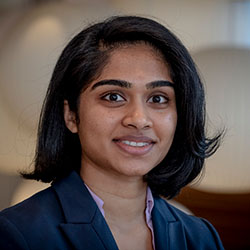 Sinduja Marx, PhD
Sinduja Marx, PhD“Firsthand insights from industry experts are invaluable,” said Sinduja Marx, PhD, a biological engineer who joined the Invent program at its inception. She does most of her work in the Olson Lab and is now collaborating with the Cerosaletti and Ziegler labs at the Benaroya Research Institute.
Dr. Marx is focused on developing curative therapeutics for children with severe asthma and eosinophilic esophagitis (EoE), which are chronic inflammatory diseases. She utilized a novel immunogen platform to generate a diverse set of antibodies that bind to and disrupt the disease pathway associated with both diseases.
“We are now focusing on advancing our lead candidates and will explore an antibody gene transfer approach to developing a one-time therapy for patients,” she said.
Dr. Marx has completed two successful antibody campaigns, including one for CD3, a protein on the surface of immune system T cells that is an essential target of all bispecific T-cell engagers in the treatment of cancer.
“Being at Seattle Children's, where there are dozens of talks each week on topics ranging from pediatric cancers to inflammatory conditions, I learn a lot about state-of-the-art target validation and disease biology,” Dr. Marx said. “Being around experts who have developed therapeutics now in clinical trials, as well as invited speakers from biotech, fills the knowledge gap regarding how therapeutics are developed and ultimately make it to the finish line for patients.”
Dr. Marx says her time with her Seattle Children’s clinical mentor, gastroenterologist Michael Pickens, DO, provides real-world insights, too.
“It's an interesting exchange of both information and thought processes because he’s a doctor and I'm a scientist, and we’re both working on the same problem: helping patients with EoE. It was an amazing opportunity to shadow him as he diagnosed and planned the best course of treatment for these kids. In the process, I’ve learned about better diagnostic tools and shortcomings of current treatments,” Dr. Marx said. “It's one thing to read about how EoE affects patients and how well the treatments work, but actually meeting patients helps me understand the patient population very well.”
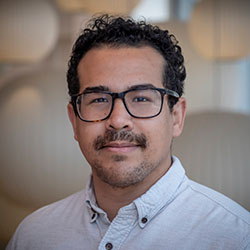 Stephen Carney, PhD
Stephen Carney, PhDDr. Marx and fellow scholar Stephen Carney, PhD, a geneticist in the Ben Towne Center for Childhood Cancer and Blood Disorders Research’s Myron Evans Lab, were recently accepted into the National Institutes of Health Entrepreneurship Bootcamp, where they’ll learn to assess customer/stakeholder needs and develop stronger business models and market strategies to improve the commercialization potential of a curative gene therapy for EoE.
Dr. Olson said Marx’s antibody campaigns were among the most successful he’s ever seen. “People have been trying for over 40 years to come up with good antibodies against CD3. Of the hundreds of bispecific therapeutics that are in clinical trials or being clinically developed, over 90% of them are descendants of one clone of an anti-CD3 antibody, and so many groups — including ours — have had failed attempts in the past,” he said. “But she not only got positive antibodies, but she got 13 clonotypes — different families of antibodies that interact with human CD3.
“In her other campaign, she generated antibodies against the protein that causes severe asthma and EoE, and she used a new technology that specifically looked for antibodies that were cross-reactive with multiple species. One of the problems we have with immunotherapies or other therapies is if they only react with the human protein, then you can't really see toxicity or even efficacy in animal models. Surprisingly, she got over 100 antibodies and over half of them were cross-reactive,” he said.
Seattle Children’s has received invention disclosures on the novel antibody sequences and intends to file patent applications protecting these sequences. Two companies are now in conversation with Seattle Children's about potentially licensing the same technology platform to generate antibodies for their clients. “So not only did she get what she was looking for,” Dr. Olson said, “but she also elevated that platform to the point where people are seeing it as potentially the new standard for how you develop antibodies.”
The Power of Team Science
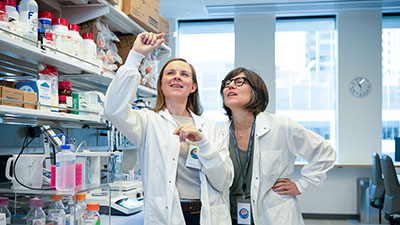 From left: Emma Wrenn, PhD, and Beth Lawlor, MD, PhD
From left: Emma Wrenn, PhD, and Beth Lawlor, MD, PhDEmma Wrenn, PhD, an affiliate scholar in the Lawlor Lab, is researching the relationship between epigenetic plasticity, the tumor microenvironment and metastasis in Ewing sarcoma. She is among the first in the U.S. to develop antibody-based therapeutics targeting the proteins that tumor cells secrete around themselves like a protective nest (that eventually cause cancer spread) instead of the tumor’s surface.
“She has shown she has molecules that are penetrating deep into tumors and when she attaches an immune-stimulating molecule to them, almost all the cancer cells are eliminated in vitro within a matter of days. Unfortunately, one of those molecules looks as though it would be toxic to the liver if administered systemically,” Dr. Olson said.
That setback might have ended Dr. Wrenn’s project in another setting, but Invent scholars help one another. She is now partnering with fellow scholar Yusuke Suita, PhD, who is developing a local immunotherapy for pediatric solid tumors.
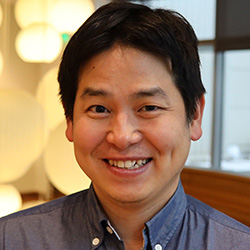 Yusuke Suita, PhD
Yusuke Suita, PhD“Yusuke has this really cool project using injectable gels with embedded antibodies that slowly seep out over time. If injecting into the bloodstream is toxic, then when someone has their tumor removed, we could inject this gel loaded with the antibody drug into the incision and then it could clean up all the residual cancer cells very locally that might have been missed and avoid toxicities,” she said.
Dr. Wrenn calls herself the biggest cheerleader of the Invent program: “I love it. I think every research institute should have a program like this. It’s a huge missing piece of the puzzle in postdoctoral training.
“One of the best parts is that we meet informally and it's so helpful because we all work in such broad fields — and usually the best ideas in science are not from someone who works on something just like you. I’ve gotten great ideas from scholars who work on malaria or on tuberculosis. Also, there are tools I didn't even know existed until another Invent postdoc mentions it, and I’m like, ‘Oh, can I come to your lab and use that? It would totally fix an experiment I've been trying to do,’” she said.
Dr. Jha particularly appreciates Invent’s focus on recruiting emerging research leaders less commonly seen in biotech. “Being a female and coming from a developing country myself, the induction of a program that intentionally provides opportunities to underrepresented groups is truly incredible,” she said. “I certainly did not have the resources or opportunities in past instances to be able to research what I wanted. The platform provided by Invent makes me feel valued, wanted and that I deserve to be here.”
— Colleen Steelquist
Further reading:
